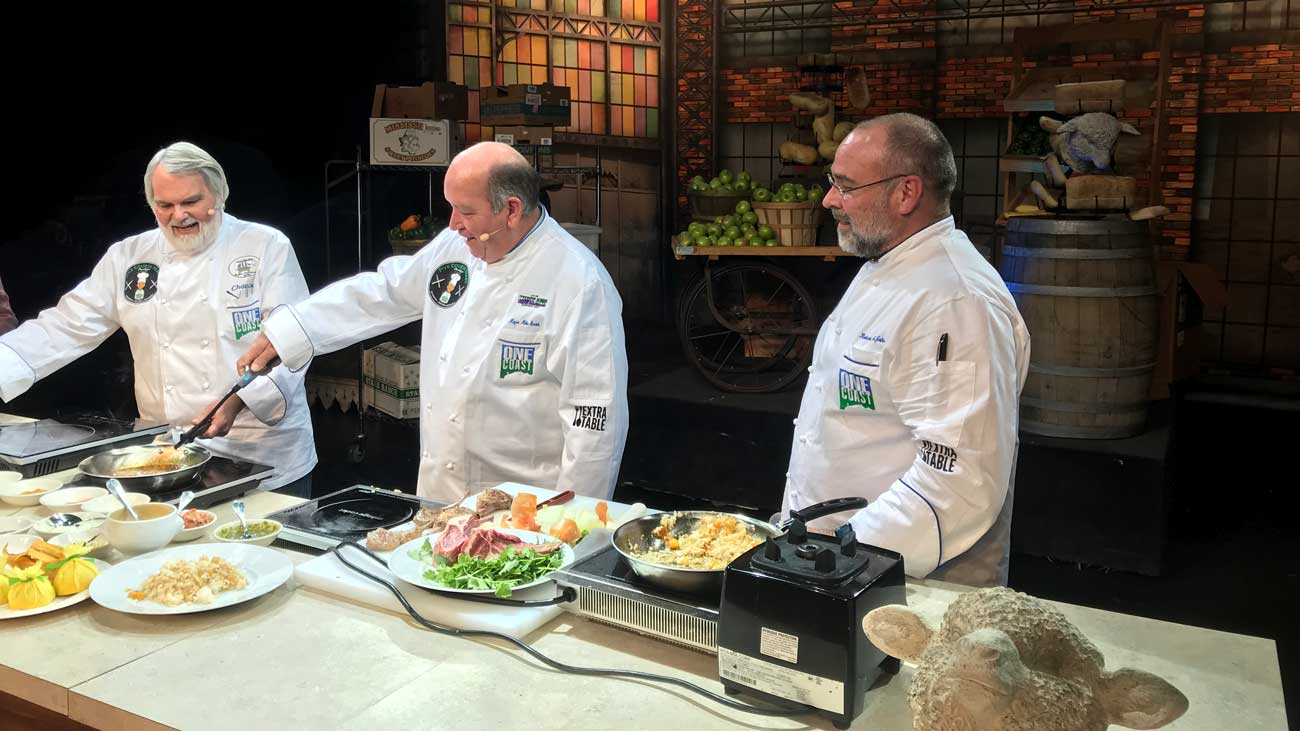 This weekend I took my children to see the new Disney/Pixar film, Ratatouille. It’s about France’s greatest chef—a rat.
This weekend I took my children to see the new Disney/Pixar film, Ratatouille. It’s about France’s greatest chef—a rat.
The food in the animated feature looks good enough to eat. A majority of the movie takes place in a French restaurant kitchen and most of the main characters, sans the rat and his family, are chefs.
In a few weeks, Catherine Zeta Jones will be starring in a new movie in which she plays a chef. From the previews, it appears that she’s in love with another chef.
Restaurants, chefs, and food have never been more popular than they are today.
When I was a kid Walt Disney movies were about parentless baby deer, dogs, and Volkswagens that had minds of their own. The closest Disney came to a culinary theme was an Italian restaurant scene in Lady and the Tramp in which two dogs eat a plate of spaghetti. 
I have two friends who don’t let their children watch any mainstream television. Their children are 10, eight, and three-years old. They watch The Food Network. And when I say they watch The Food Network, I mean they watch the Food Network exclusively. It’s the only thing that’s program on in their home.
Today’s kids know the chefs, they know their restaurants, and they know their personal histories. Consequently, they know a lot about food, much more than I did in my late teens and early 20s.
The Food Network is miles ahead of the television of my youth with three channels and eventually PBS in the late 1960s. PBS is the only place I remember seeing cooking on television. Julia Child and Justin Wilson were the early pioneers.

American food has come a long way in a short time, due in part to Julia Child and James Beard on television and Alice Waters at Chez Panisse in Berkley. Up until the late 1970s, the only “serious” food was French food, and “serious” chefs were French chefs. All of the serious American restaurants were French themed.
Today, some of the world’s greatest chefs are Americans who cook fresh, regional, and seasonal cuisine. As it has been for years in Italy and France, culinary regionalism is the order of the day. Today’s American cuisine is fresh, local, broad, and complex, from California cuisine, Southwestern, Tex-Mex, Southern, Cajun, and Creole, to the Northeastern region, Midwest, Florida, Carolina barbeque, Texas barbeque, and the list goes on.
In our restaurants and in our homes, we have become more aware of what we put in our bodies. Due to busy schedules and two-income families, eating out is more popular than ever— good news for restaurateurs, not-so-good news for the family dinner table.
Several times each month I speak to junior high or high school students about careers in the restaurant business or culinary arts. They see chefs on television and they want to open restaurants.

Food is “in.” When I opened my first restaurant in 1987, goat cheese and fresh herbs were special-order items from my food supplier. I fielded questions from customers such as, “What are shiitake mushrooms?” These days I can purchase micro greens grown in California and have them flown in the next day.
In the fine dining kitchens of the 21st century Americans, eat mostly fresh and local food instead of complicated and overwrought French classical dishes. We have countless web sites and blogs that discuss food to the nth degree. We have come from a rudimentarily animated bowl of spaghetti in Lady and the Tramp to truffles and foie gras that appear as authentic as the real thing on Ratatouille.
For those of us who love food, things are looking up, and the future is looking tastier everyday.




